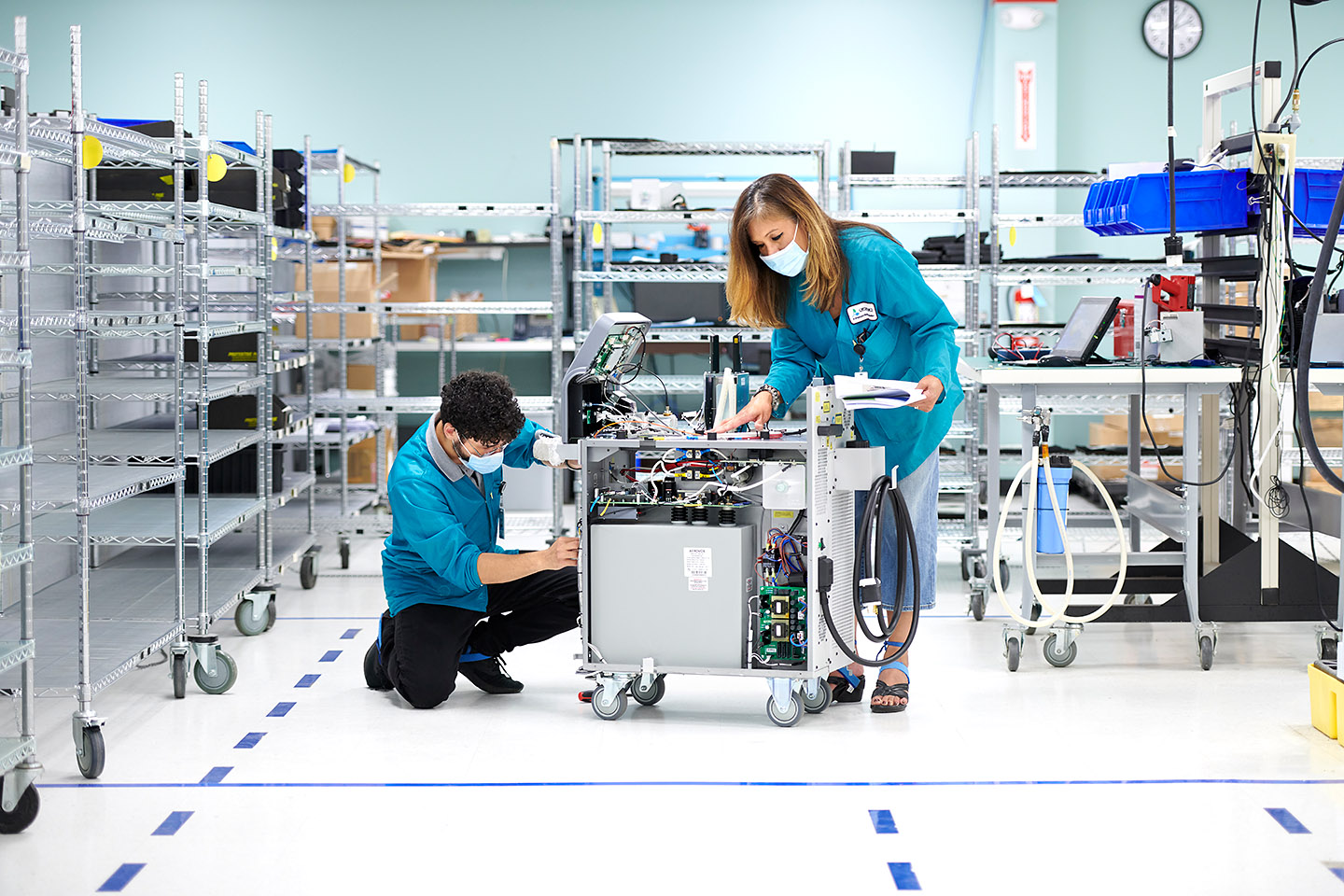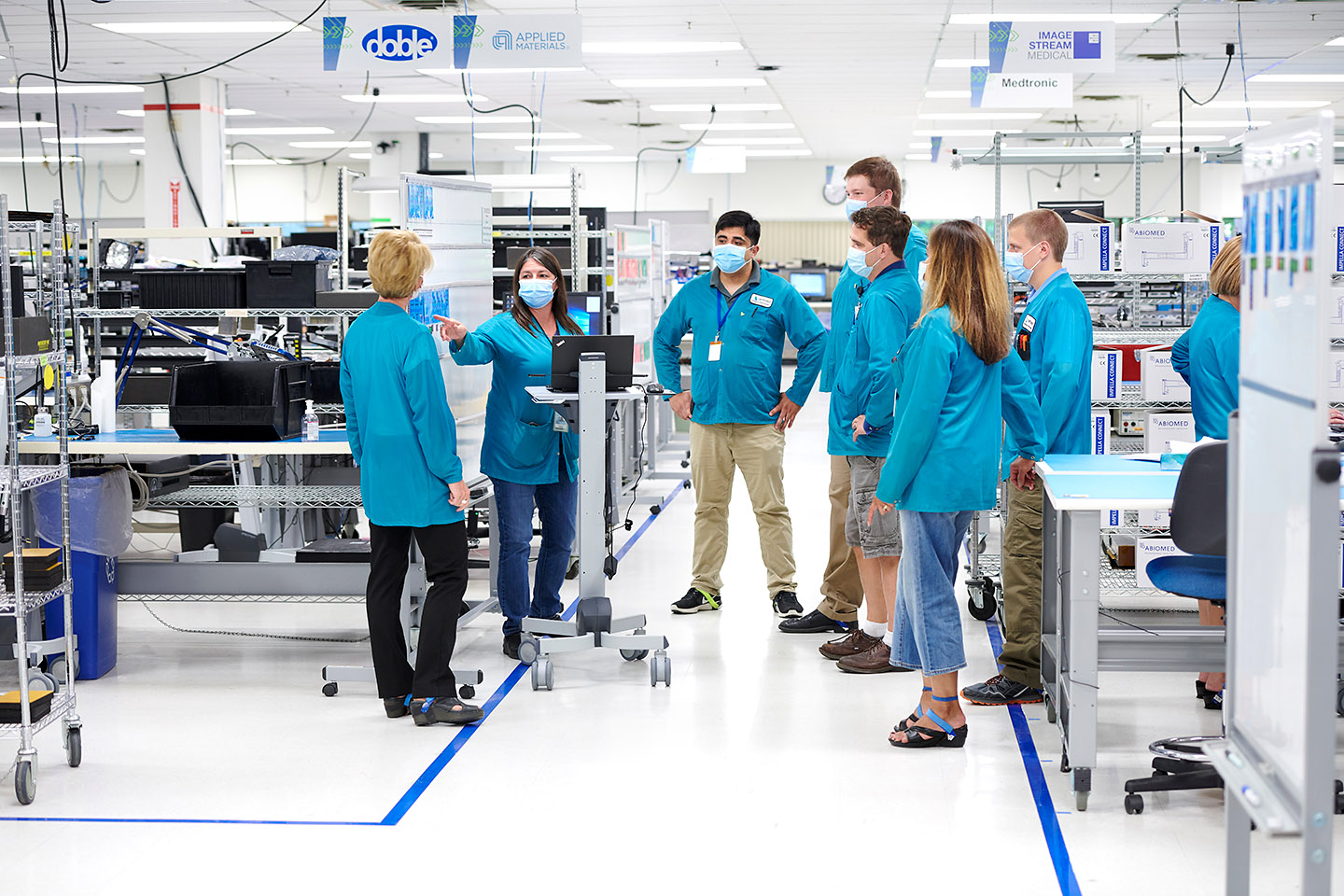By Patricia E. Moody
Cirtronics, an employee-owned contract manufacturer located in southern New Hampshire, is weathering this pandemic reasonably well thanks to its robust customer base and invested employees. Categorized as an essential business due to customers in the medical technology and defense markets, the organization, says president and CEO, Dave Patterson, required no shut-down, furloughs or layoffs due to the pandemic. At Cirtronics, a strong collaborative culture is foundational to the company, and employees adapted work methods and schedules to accommodate safety guidelines.
 Cirtronics’ customer base includes defense, robotics and MedTech/life science companies like Ava Robotics (a spinoff of iRobot), Brooks Automation, FLIR Endeavor, Erbi Biosystems and GatesAir.
Cirtronics’ customer base includes defense, robotics and MedTech/life science companies like Ava Robotics (a spinoff of iRobot), Brooks Automation, FLIR Endeavor, Erbi Biosystems and GatesAir.
We asked Patterson for a mid-pandemic update
1. Has the mission itself changed because of the pandemic?
Patterson: I’m happy to say no. Our employees and the company remain focused on serving our customers. We’ve expanded our robotics customer base with several new programs such as drones for military and agricultural applications as well as unmanned ground vehicles. Programs from the life sciences and medical technology markets have also increased.
We’ve been really lucky. We have had zero coronavirus cases. Our biggest challenge from the pandemic is in how we interact and communicate. We’re used to being very interactive with our customers, employees and partners. We want all of the people we work with to feel safe and valued and that has required adjusting our communication and engagement methods so that we can be together, while apart. We’re definitely leveraging technology. We are offering prospects a guided virtual tour experience and using Zoom for team meetings, as well as many customer and supplier meetings. For our larger gatherings, we bring out a ladder and a PA system and have company meetings in the parking lot.
Back in February, we formed a COVID-19 response team with representatives from all departments. As with any major challenge, we gather input from the employees, listen and adjust based on how we can best support our team and the organization. In addition to the internal COVID-19 response team, I am a member of a CEO peer group of leaders from people-centric companies, which provides a great opportunity to learn from like-minded companies.

Based on the input from the COVID response team and the CEO peer group, we made some quick changes. We increased the number of hand-sanitizing stations, and stocked up on lightweight and comfortable PPE and made them available to all employees. And yes, at first it was really hard. It’s a change and it’s unnerving. But here we are, some months into this, and we see a lot of our co-workers wearing cloth and home-made masks that reflect their personalities. We recognize our personal responsibility to keep each other safe, and while no one pretends mask wearing is enjoyable, the organization adapted and is moving forward.
In addition to reviewing how to keep our employees safe, we reviewed our space. Our facility is 175,000 square feet, which offers us adequate space to spread out. We sit a bit farther apart and are aware of social distancing, but our factory meets recommended guidelines. Our one big change is a new Plexiglas shield at the lobby desk.
As the community around us has started to open back up, we added more checks and balances. Every employee is required to use a thermal scanner daily upon arrival. We’re really a family here at Cirtronics, and we take care of one another. We encourage staff who can work from home to do so, and for those of us who need to be onsite, we have staggered our schedules to minimize the number of people in any specific area.
2. What should U.S. companies work on now? R & D, lean manufacturing methods, labor, robotics, IT, supply chain, or something else?
Patterson: Right now I would recommend focusing on two things:
 The first one may not be obvious, but it is relationships. This situation is a great opportunity to remind companies of the importance of ongoing engagement with employees, customers, suppliers… their whole ecosystem of stakeholders. Remember, trust is earned. You can’t just wake up one day and say “I care.” Caring is a genuine feeling you want people to experience every single day. So look after and care about every stakeholder of your organization, so when push comes to shove, you will have support, and your expression of caring will be sincere, proven, trusted, and mutual.
The first one may not be obvious, but it is relationships. This situation is a great opportunity to remind companies of the importance of ongoing engagement with employees, customers, suppliers… their whole ecosystem of stakeholders. Remember, trust is earned. You can’t just wake up one day and say “I care.” Caring is a genuine feeling you want people to experience every single day. So look after and care about every stakeholder of your organization, so when push comes to shove, you will have support, and your expression of caring will be sincere, proven, trusted, and mutual.- The second is a more obvious one, assess your current sales strategy. As quickly as possible, each company needs to look at their business in the context of a COVID-19 world. They should ask themselves, has their customer base shifted? Are there now going to be gaps in their revenue plan? Are there opportunities that have opened up? They’ve got to make sure their strategies, plans and forecasts are based on the real-world situation and adapt. And they may uncover new ways their organizations can serve their constituents.
3. What do you think will happen next?
Patterson: Along with everyone else, I’m watching, listening and assessing. Until there is a vaccine, nothing precautionary will be scaled back, but that’s why each company’s sales strategy needs to be thought through and adapted to make smart choices. For example, if a company intends to build ventilators to address the immediate needs of a second wave, or planning to restock depleted supplies, it’s time to ramp up now so they’re ready.
I think the world is being educated about how interconnected we truly are. But I suspect we won’t emerge into a truly new era until we come out of this crisis and find that the things we’ve already talked about have revealed themselves to be necessary to the point of being commonplace – the importance of relationships, trust, communication, ongoing reevaluation of strategies and ways organizations can best serve their stakeholders.
 4. Have supply chain challenges emerged during the pandemic?
4. Have supply chain challenges emerged during the pandemic?
Patterson: At Cirtronics, we definitely have pandemic-related impacts on our supply chain. Back in February, we started bringing in more inventory proactively to support the orders we knew were coming. We also knew we had to add in extra lead time to allow for the logistical impact of COVID-19. Lead time increases are because a lot of parts ship on commercial airlines, and now — during the COVID-19 era — air traffic has decreased and shipping takes longer. We have a robust supply chain strategy that includes pre-buying, holding parts on site, and also having on-site stores from some of our main suppliers to support our most time or part sensitive products we build. Because this disease has global implications, it’s still tough to predict specifically how it will impact our global supply chain month to month. Since our parts come from all over the world (we currently have over 150 suppliers), the issue for us is logistical. So, from experience with the current conditions, we’ll continue to be proactive in our planning, sourcing and logistics for all programs.
Access related content from AME Target magazine:
- How Cirtronics builds an enterprise excellence culture (12/30/17)
- How Cirtronics leverages integrated IT (9/10/18) - AME Member login required
Named a "Pioneering Woman in Manufacturing" by Fortune magazine, Patricia E. Moody is a manufacturing management consultant and author.
Views and opinions shared in Target Online are the author's and do not necessarily reflect AME policies and positions.


